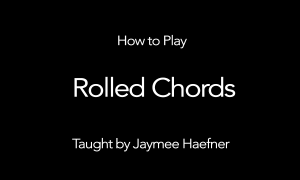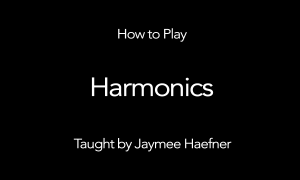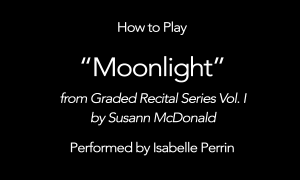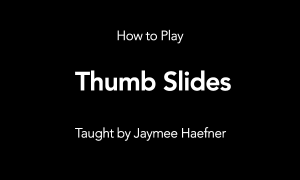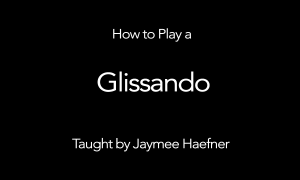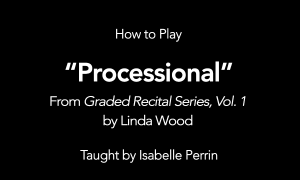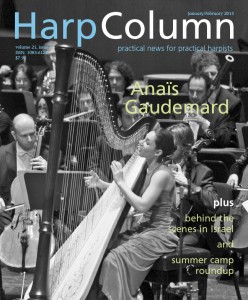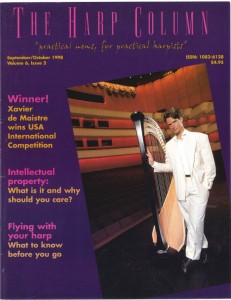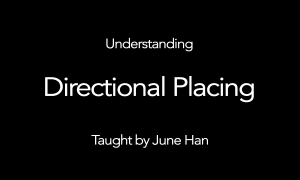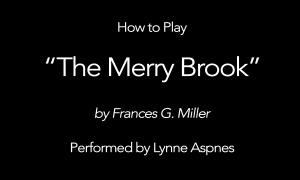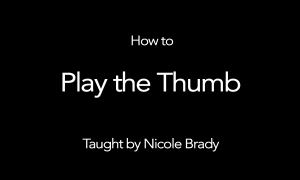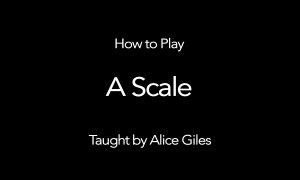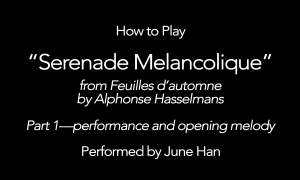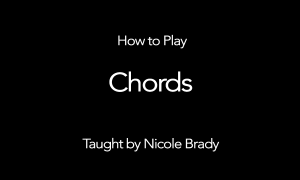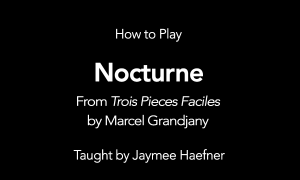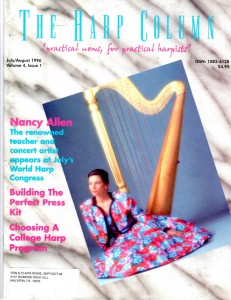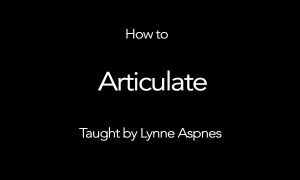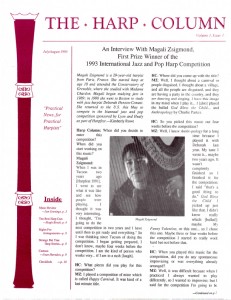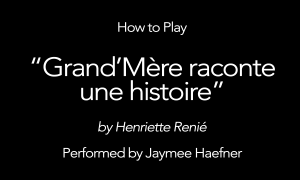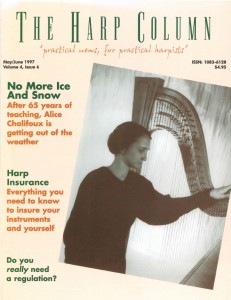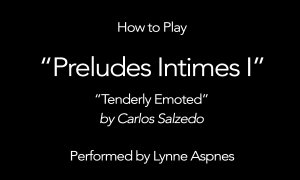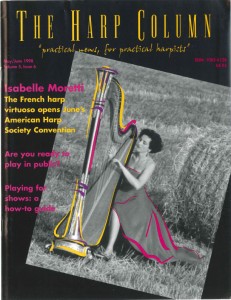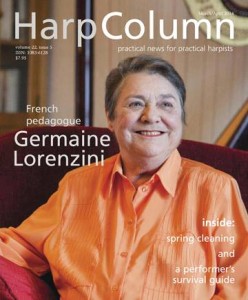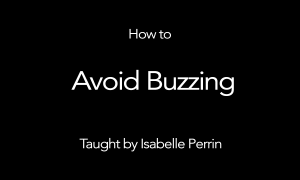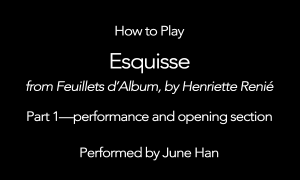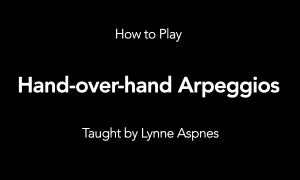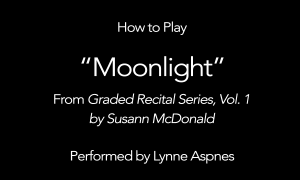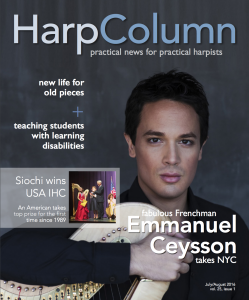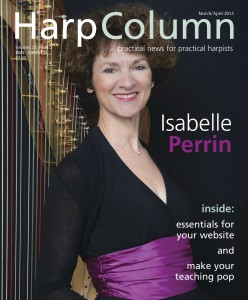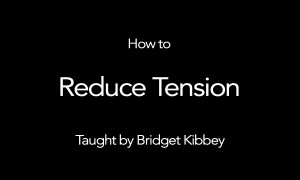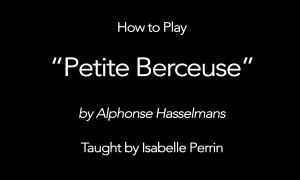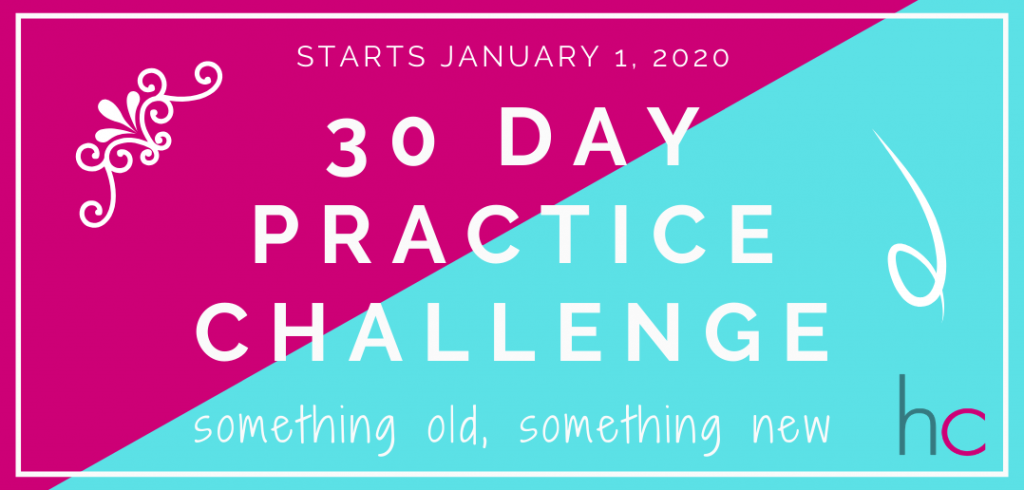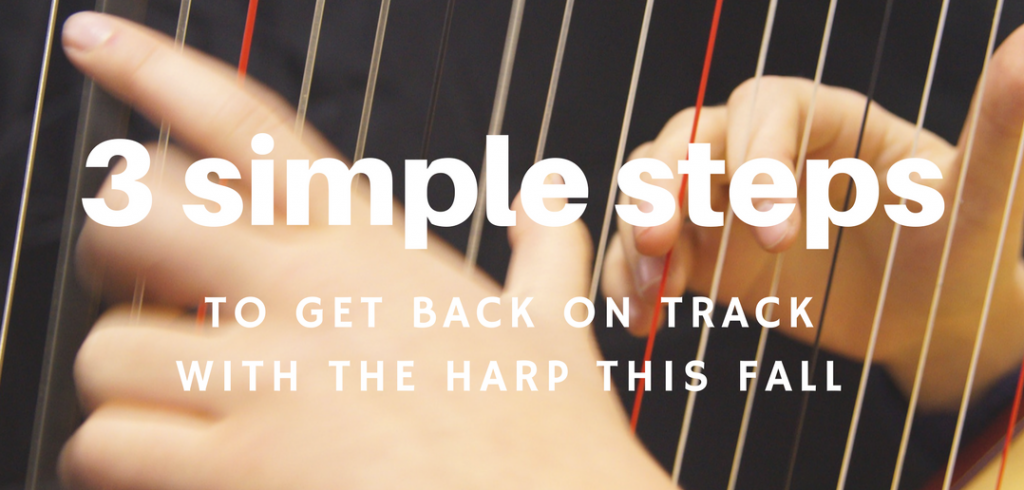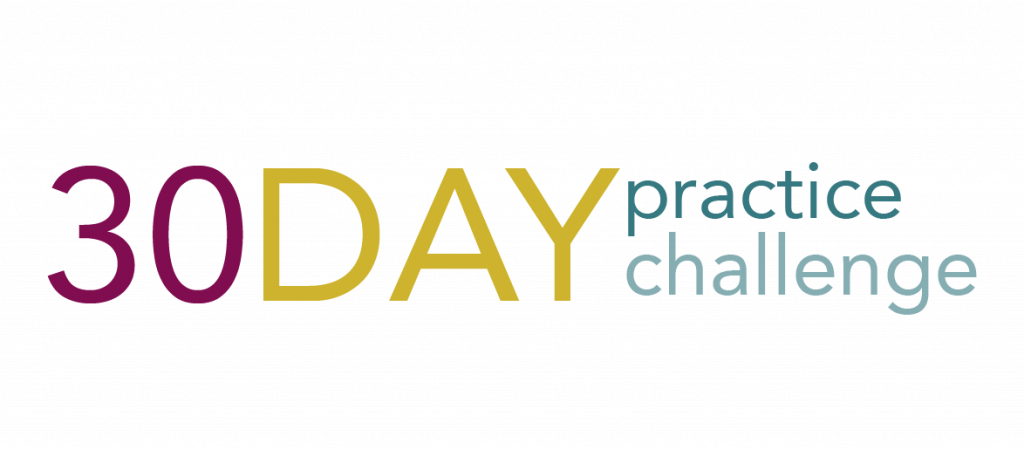30 Day Practice Challenge 2019
30 Days in France!
The 30 Day Practice Challenge is back and better than ever! This year we’re focusing on harp music and technique tips from the great French masters. The rules are simple:
 Pick a piece from one of the three great French harp masters (from top) Alphonse Hasselmans, Henriette Renié, or Marcel Tournier. Pick something appropriate to your level that you can learn to play in 30 days. (Scroll down for ideas.)
Pick a piece from one of the three great French harp masters (from top) Alphonse Hasselmans, Henriette Renié, or Marcel Tournier. Pick something appropriate to your level that you can learn to play in 30 days. (Scroll down for ideas.)- Commit to practicing your chosen piece a minimum of 20 minutes each day throughout the challenge.
- Finish learning your piece by the end of the challenge.
- Optional: Tag Harp Column and #practicalharpist on social media to share your progress!
Are you in? The challenge is absolutely FREE to enter, and we’re giving away prizes every week to lucky winners. Sign up to receive our daily motivational emails with inks to Harp Column articles and videos to help you reach your goals. (Heads up: anyone can join the challenge and win prizes, but you’ll need to subscribe to Harp Column and be a member of Harp Column Academy to access articles and videos.) You can come back to this page for challenge updates, but you’ll need to sign up if you want to be enrolled to win prizes.
The big three…
Why did we pick the music of Hasselmans, Renié, and Tournier for this year’s challenge, you may be wondering. The answer is simple: these classic French harpist/composers paved the foundation for the development of today’s modern instrument, its repertoire, and our technique. Now before you get all “What about Salzedo, Grandjany, Parish Alvars, and O’Carolan?” on us, yeah we know there are a lot of other great harpist/composers who did a lot for the harp. But we don’t think harpists would be where we are today without the undeniable influence of the “big three.”
Whatever type of harp you play, whatever your technical background, whatever style of music you play, and whatever your level, there’s so much you can learn from studying the music of these French masters, that it seemed like the perfect theme for this year’s challenge. Plus, we’ve got lots of great tips and insights from today’s top players who carry on the tradition of these harp legends.
Repertoire Suggestions
Before you begin the challenge, you’ll need to pick a piece. There are literally hundreds you can choose from at every level composed by the big three. If you don’t know where to start, check out some of our favorites below, along with our new Harp Column Music editions for both lever and pedal harp that we’ve published with the challenge in mind. (* Indicates playable on lever harp.)
[columns]
[column size=”1/3″]
Beginning/
Advanced Beginning
- *Petite Etude or Study in C from Complete Method for Harp (Renié)
- *Petite Berceuse (Hasselmans) watch our lessons at HCA
- *Grand Mere Raconte une Histoire (Renié) watch our lessons at HCA
- Berceuse (Tournier)
[/column]
[column size=”1/3″]
Intermediate
- Trois Petites Pièces Faciles (Hasselmans)
- Feuilles d’Automne (Renié)
- Au Bord du Ruisseau (Renié)
- *Au Seuil du Temple from Images Suite No. 1 (Tournier)
- Serenade Melancolique (Hasselmans) watch our lessons at HCA
[/column]
[column size=”1/3″]
Advanced
- Petite Valse (Hasselmans)
- Berceuse Russe (Tournier)
- Chanson de Mai—Hasselmans watch our lessons at HCA
- Vers la Source Dans le Bois (Tournier)
- Etude de Concert (Au Matin) (Tournier)
- Sonatine (Tournier)
[/column]
[/columns]
Bring It!
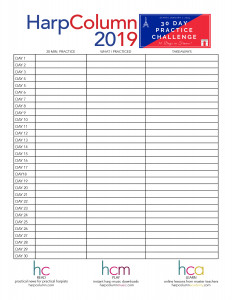 This is YOUR challenge, so pick whatever piece works for you. Each day we’ll be posting musical inspiration from some of the French repertoire lessons at Harp Column Academy. You can apply the same ideas and techniques to whichever piece you’ve chosen to focus on this month. Want a little practice accountability? Use our practice log to keep track of your daily progress.
This is YOUR challenge, so pick whatever piece works for you. Each day we’ll be posting musical inspiration from some of the French repertoire lessons at Harp Column Academy. You can apply the same ideas and techniques to whichever piece you’ve chosen to focus on this month. Want a little practice accountability? Use our practice log to keep track of your daily progress.
Don’t forget to comment here and tag us on Facebook and Instagram to let us know what you’re working on and how you’re doing with Harp Column’s 30 Day Practice Challenge 2019!
[separator type=”half-line” /]
Day 30
“In music, you’ll find everything that is alive, and all that makes us human. One of the functions of great art is to show us that we are not alone.”
—Germaine Lorenzini
Today’s goal:
Pat yourself on the back!
We saved Germaine Lorenzini’s inspiring words from our 2014 interview for the last day of our 30 Day Practice Challenge! We hope you’ve had a great month examining technique, musicality, phrasing, and new ways to approach the great French masters. We are not alone in music, and we are not alone as harpists! Give yourself a big pat on the back today, and we hope the inspiration you’ve gained from this year’s challenge carries you throughout the year! If you missed our interview with Germaine Lorenzini, you can find it here.
Today’s technique tip:
Revisit rolled chords
We don’t think any harpist can get enough rolled chord practice, so we’re ending the 30 Day Practice Challenge with one more reminder about this important technique from master teacher Jaymee Haefner: “There are many ways to learn how to do the rolled chord technique, however today I’ll show you my favorite way to practice it.”
Watch now
Musical inspiration
Chanson de Mai—Part 2
By Alphonse Hasselmans, taught by June Han
“Chanson de Mai” utilizes almost every harp technique we’ve discussed during the 30 Day Practice Challenge. Whether you’re working on this piece or another one, you’ll appreciate June Han’s great tips for how to master the techniques used in this piece and play it with ease.
Watch now
Bonus inspiration
“Bring life to what you play. We may not pray to the music you are learning, or dance to the music you are learning, but it still has to move us. While you are practicing, search for ways to give your music life. Search for ways that make your music gratifying to yourself and that makes you happy.”
—Elizabeth Fontan Binoche
[separator type=”half-line” /]
Day 29
“… just one phrase, one nuance, a bit more time here—this is what can make an entire performance work.”
—Susann McDonald
Today’s goal:
Add nuance
If there’s anyone who knows what can make a performance work, it’s renowned harpist Susann McDonald. It’s no surprise that she offers such stellar advice, having been a student of the great harp legend Henriette Renié. McDonald has been featured twice in Harp Column, most recently in our May-June 2016 issue, which you can read here.
Today’s technique tip:
Master one-hand arpeggios
Harpists love to hate one-hand arpeggios, but June Han shows how to master them in her tutorial at Harp Column Academy. “Sometimes it’s very easy to cheat and place as we go,” she says, “but that doesn’t give any guarantee and it’s a very risky business.”
Watch now
Musical inspiration
Chanson de Mai—Part 1
By Alphonse Hasselmans, taught by June Han
To wrap up the 30 Day Practice Challenge, we’re offering June Han’s two-part series on “Chanson de Mai.” “It’s very difficult on the harp to have a slow moving melody to sustain,” says June about the classic melody by Alphonse Hasselmans. “On the harp we almost have to create an illusion of ringing.” Find out how she does it in her studio at Harp Column Academy.
Watch now
Bonus inspiration
“We want the listener to be interested in our music and to be moved by our playing. It’s not about who plays faster or has the best technique. More importantly, it’s about having a beautiful sound, playing everything that’s written on the page, respecting the composition, and to do something beautiful—like waiting at the end of a phrase for example. It’s more interesting for us when we practice, and it’s more interesting for others listen to.”
—Elizabeth Fontan Binoche
[separator type=”half-line” /]
Day 28
“Our instrument is technically so difficult that we tend to forget that we have to play music more than notes.”
—Xavier de Maistre
Today’s goal:
Go beyond technique
Are you playing music, or just notes? If you’ve built a solid technical foundation, you can trust yourself to go beyond technique to discover the musical opportunities your piece has to offer. What’s your story and what do you want to say? Xavier de Maistre reminded us to play music more than notes in his 1998 interview. Download it here.
Today’s technique tip:
Strengthen slides
June Han has great advice on slides in her tutorial at Harp Column Academy: “What I have figured out is that if you shoot almost in the same place or higher, it ensures a very smooth slide.”
Watch now
Musical inspiration
Petite Berceuse
By Alphonse Hasselmans, taught by Jaymee Haefner
“You’re coming back onto some of the same strings you’ve just played, so it’s really important that you place very late [to avoid buzzing],” says Jaymee Haefner in her tutorial on “Petite Berceuse” by Alphonse Hasselmans.
Watch now
[separator type=”half-line” /]
Day 27
“I think if you are purpose-driven from the beginning, you are in good stead.”
—Kathleen Bride
Today’s goal:
Have a purpose
Kathleen Bride gives excellent advice today that you have to have a purpose. We hope the 30 Day Practice Challenge has served as a good purpose for you this month, but what purpose can you bring to your playing every day? Whether its practicing for an upcoming concert or setting out to conquer a specific technical problem, we challenge you to find your purpose every time you sit behind the harp! If you missed our 2015 interview with Bride, you can find it here.
Today’s technique tip:
Do even more scale work
“We all know how to play a scale…but sometimes when we encounter them in a musical context and they seem fast, or they seem longer than one octave, we do panic a little bit,” says June Han. Find out her tricks for strengthening scales in her tutorial at Harp Column Academy.
Watch now
Musical inspiration
Lullaby for Violet
By Jane Weidensaul, taught by Isabelle Perrin
“The first thing when we learn a new piece, is to read all the words, and to make sure you understand all the words,” says Isabelle Perrin in her tutorial on this classic first solo.
Watch now
Bonus inspiration
“The most important thing we are after when we play the harp is sound… to pursue a nice sound.”
—Elizabeth Fontan Binoche
[separator type=”half-line” /]
Day 26
“…we always need to find new talents, new pieces, new or different ways to play the harp, new combinations.”
—Isabelle Perrin
Today’s goal:
Discover hidden talents
Be curious. Be flexible. Be yourself. Top harpists echo a theme, including Harp Column Academy master teacher Isabelle Perrin who encourages us to find the hidden talents within ourselves. What are your hidden talents on Day 26 of our 30 Day Practice Challenge? There’s no time like the present to discover them! If you haven’t read our 2015 feature interview with Isabelle Perrin, you can find it here.
Today’s technique tip:
Revisit harmonics
“Ultimately what you should do is what creates the very best sound for you as a player,” says master teacher Jaymee Haefner. Find out her tricks for playing great harmonics in her lesson at Harp Column Academy.
Watch now
Musical inspiration
Gavotte
By Marcel Grandjany, taught by Isabelle Perrin
“Remember, when you play a dance, you have to feel the rhythm of the dance. You have to play it such as someone listening to you wants to start dancing,” says Isabelle Perrin. Learn how to play Marcel Grandjany’s “Gavotte” now at Harp Column Academy.
Watch now
Bonus inspiration
“For me, it’s far less important to show off technique than to give the listener a pleasant and meaningful ambiance.”
—Elizabeth Fontan Binoche
[separator type=”half-line” /]
Day 25
“I encourage flexibility in style, technique, and mind.”
—Nikolaz Cadoret
Today’s goal:
Be flexible
Are you flexible in your approach to the harp? Nikolaz Cadoret offers great advice that sometimes we need to make unexpected changes in our technique and interpretation. Go with the flow today! Check out our 2017 interview with Cadoret here if you haven’t yet.
Today’s technique tip:
Roll chords beautifully
We can’t get enough practice on chords, especially with hot tips from master teacher Lynne Aspnes. Find out her advice for crafting beautifully rolled chords in her tutorial at Harp Column Academy.
Watch now
Musical inspiration
Moonlight
By Susann McDonald, taught by Isabelle Perrin
Master teacher Isabelle Perrin offers another interpretation of the classic piece “Moonlight,” by Susann McDonald. Watch this lesson now in her studio at Harp Column Academy.
Watch now
This week’s winners…
Harp Column magazine one-year subscription:
- Kai Rasmussen
Harp Column Academy one-year membership:
- Janet Coombes
$10 Harp Column Music coupon:
- Jenifer Reed
- Viv Sarubi
- Jaqueline Robinson
(Are you a winner? We’ll be contacting you with details on how to claim your prize!)
[separator type=”half-line” /]
Day 24
“I don’t ever think about being the best… In artistry and music making everyone has their own niche.”
—Bridget Kibbey
Today’s goal:
Be yourself
Harp Column Academy master teacher Bridget Kibbey studied with Nancy Allen, and was featured in our March-April 2005 issue. Her advice to find your own niche is just the ticket as we reach the final week of the 30 Day Practice Challenge! Read our interview with her here.
Today’s technique tip:
Consider dynamics
The composer of your piece has probably laid out a dynamic blueprint for you, but are you paying attention to everything on the page? Take a better look today, as you listen to Isabelle Perrin’s advice in her tutorial at Harp Column Academy
Watch now
Musical inspiration
Petite Valse—Part 2
By Alphonse Hasselmans, taught by June Han
June Han offers some creative advice for how to make “Petite Valse” dance! “When I was learning this piece it made me [think of] all kinds of movies. You can think of ‘Beauty and the Beast,’ ‘The King and I,’ ‘My Fair Lady,’ or any grand movie. When you visualize that kind of scene where there’s a very sumptuous waltz, at some point you’re going to step out onto the terrace, and the music is going to be a little muted.”
Watch now
[separator type=”half-line” /]
Day 23
“Sometimes it’s less important to miss one note, [than] to play good music.”
Bernard Andrès
Today’s goal:
Look at the big picture
 Raise your hand if you let one missed note derail your focus. Almost all of us are guilty of this practice pitfall from time to time. We know we told you not to tolerate sloppy playing on Day 11 of the challenge, but take Bernard Andrès’ advice: at a certain point you just need to let it go and accept how you sound in the moment. If you missed our 2001 interview with him, you can read it here.
Raise your hand if you let one missed note derail your focus. Almost all of us are guilty of this practice pitfall from time to time. We know we told you not to tolerate sloppy playing on Day 11 of the challenge, but take Bernard Andrès’ advice: at a certain point you just need to let it go and accept how you sound in the moment. If you missed our 2001 interview with him, you can read it here.
Today’s technique tip:
Practice perfect thumb slides
Thumb slides are a convenient—yet sometimes tricky—harp technique. Are your slides as clean and even as they could be? Watch Jaymee Haefner’s lesson at Harp Column Academy for tips on how to make them perfect.
Watch now
Musical inspiration
Petite Valse—Part 1
By Alphonse Hasselmans, taught by June Han
“The technical difficulty—or awkwardness—of the valse is in the slide,” says June Han in her lesson on Alphonse Hasselman’s “Petite Valse.” “Sometimes [a slide] can get stuck. If you’re playing to loud or trying to force, it’s going to get stuck a little bit. You have to look away, and shoot your finger high.”
Watch now
[separator type=”half-line” /]
Day 22
“Practice a lot, but don’t forget to listen to your feelings.”
—Emmanuel Ceysson
Today’s goal:
Feel it
 How does your music make you feel, and are you conveying those feelings when you play? French harp master Emmanuel Ceysson reminded us not to forget this important element when we talked with him in 2016. Read our interview with him here if you haven’t yet!
How does your music make you feel, and are you conveying those feelings when you play? French harp master Emmanuel Ceysson reminded us not to forget this important element when we talked with him in 2016. Read our interview with him here if you haven’t yet!
Today’s technique tip:
Pay attention to breathing
Breathing can help you zone in on your feelings while you play. In this classic tutorial at Harp Column Academy, Isabelle Perrin shows exactly how to breath with your music.
Watch now
Musical inspiration
Nocturne
By Marcel Grandjany, taught by Isabelle Perrin
“It’s very important to pay attention to dynamics and take a little breath before you begin…If you played the flute, you would breathe before playing the first note.” Examine your breathing technique in Isabelle Perrin’s lesson on “Nocturne,” by Marcel Grandjany
Watch now
Bonus inspiration
“When we are really trying to communicate something verbally, we won’t use a monotone voice. It’s the same in music—we can’t communicate fully when we are playing in a monotone fashion. We must breathe. Breathing in music is fabulous. When you breathe while playing, that is, to allow the music to breathe, you give color and ambiance. We listen better. We play better. We, as harpists, don’t need use our own breath to create sound for our instrument, but we must still breathe and add breath!”
—Elizabeth Fontan Binoche
[separator type=”half-line” /]
Day 21
“I find that if you really want something musically, somehow you transcend the limits of the instrument.”
—Marie-Pierre Langlamet
Today’s goal:
Think outside the box
 Let’s be honest: playing the harp is difficult, and it can be tempting to blame our problems on the instrument. Marie Pierre-Langlamet reminds us that if you really want something musically, you’ll find a way to do it! Think outside the box today, not about what the harp can’t do, but what you can do with it! In case you missed it, you can read more about Marie-Pierre Langlamet in our May-June 2007 issue here.
Let’s be honest: playing the harp is difficult, and it can be tempting to blame our problems on the instrument. Marie Pierre-Langlamet reminds us that if you really want something musically, you’ll find a way to do it! Think outside the box today, not about what the harp can’t do, but what you can do with it! In case you missed it, you can read more about Marie-Pierre Langlamet in our May-June 2007 issue here.
Today’s technique tip:
Play beautiful glissandos
When was the last time you thought about your glissandos? Although we tend to think of this as an easier harp technique, it still requires thought and work. Examine your gliss technique today!
Watch now
Musical inspiration
Processional
By Susann McDonald, taught by Isabelle Perrin
“We don’t practice glisses enough,” says master teacher Isabelle Perrin in her tutorial on “Processional” by Susann McDonald. “We think any child could do this…it’s so easy to just slide your finger up and another one down, so we think it’s not something we have to practice. But actually it is.”
Watch now
Bonus inspiration
“Glissandos are not easy as easy as you think! The angle of the finger is crucial for clear sound, you’ve got to bend at the joint a little so that you don’t have the finger rubbing parallel on the string, cutting off the sound.”
—Elizabeth Fontan Binoche
[separator type=”half-line” /]
Day 20
“… have more than a harpist’s view of the music.”
—Anaïs Gaudemard
Today’s goal:
Think like another musician
It’s no surprise that French harpist Anaïs Gaudemard walked away with the top prize at the 2012 18th International Harp Contest in Israel. Just 21 at the time, Gaudemard was wise beyond her years with advice to “have more than a harpist’s view of the music.” Imagining how another instrumentalist would approach something can bring depth to you piece. Try it today! Ready more about Anaïs in our January-February 2013 issue here.
Today’s technique tip:
Play beautiful harmonics
“A beautiful harmonic is a harpist’s stock and trade,” says master teacher Lynne Aspnes in her classic tutorial at Harp Column Academy. “Having a reliable one makes playing them a whole lot of fun.”
Watch now
Musical inspiration
Au Bord du Ruisseau—Part 2
By Henriette Renié, taught by June Han
June Han offers more great advice on harmonics in Part 2 of her series on “Au Bord du Ruisseau,” by Henriette Renié. “When you’re hopping around [playing harmonics]…your hand has to adjust. If not, you’re just going to be in the wrong place. You’re going to knock on the wrong door for 10 minutes, and nobody’s going to come out, because that’s not where the party is.”
Watch now
Bonus inspiration
“Respect what’s on the page: each accent, each dynamic marking, each nuance.”
—Elizabeth Fontan Binoche
[separator type=”half-line” /]
Day 19
“I concentrate more on music, and I can do that now because I worked a lot on my technique before.”
—Xavier de Maistre
Today’s goal:
Explore musicality
We hope you’ve been working hard on your technique throughout the 30 Day Practice Challenge. If so, you’ve built the foundation necessary to begin exploring the musicality hidden within your piece. Go beyond the notes today to think about how you want to express yourself and what you want to say. Find out more about Xavier de Maistre in our 1998 interview with him here.
Today’s technique tip:
Explore directional placing
“Directional fingering means placing fingers that are going on the same direction,” says master teacher June Han.
“It’s pretty instinctive, but when we have a pattern that changes midway, it gets confusing.” Watch her tutorial at Harp Column Academy now to understand this concept and how you can bring it to your piece.
Watch now
Musical inspiration
Au Bord du Ruisseau—Part 1
By Henriette Renié, taught by June Han
“In this piece there is a predominance of right hand sextuplets. This should sound and feel like a very peaceful carpet. The right hand should feel like the water—undulating.” June Han’s newest video series at Harp Column Academy provides the perfect place to explore musicality.
Watch now
[separator type=”half-line” /]
Day 18
“You’ve got to be curious in life, otherwise you don’t develop.”
—Catherine Michel
Today’s goal:
Be curious
The list of great advice we got from Catherine Michel when we talked with her in 2010 goes on and on. We especially like her reminder that—unlike the cat—it pays to be curious as a harpist. What have you discovered at the harp today? If you missed our interview with Michel, you can read it here.
Today’s technique tip:
Place carefully
Placing is an often overlooked, yet very important concept for harpists. “When you are in the learning process, it’s very important that you look ahead to the next note, and you try to grab them all at once,” says master teacher June Han in her lesson on placing 8-note arpeggios. You can apply this concept to any piece that requires placing notes together.
Watch now
Musical inspiration
The Merry Brook
By Frances Miller, taught by Lynne Aspnes
“The Merry Brook” is another piece that isn’t French, but mimics the French style of arppegiated writing. And it’s a perfect place to put your placing practice into action. “One thing that helped me when I was learning it,” says master teacher Lynne Aspnes, “was to think of each of the hands as a group. So I was learning the group event rather than one note at a time”
Watch now
Bonus inspiration
“When you come across a technically difficult section of a piece you are learning, transform it into different types of exercises, playing these exercises up and down the harp for example, alternating hands, all the while thinking about sound and the volume of each note.”
—Elizabeth Fontan Binoche
This week’s winners…
Harp Column magazine one-year subscription:
- Tara Esmaeili
Harp Column Academy one-year membership:
- Martha Painter
$10 Harp Column Music coupon:
- Moyra Reily
- Anita Lowe
- Maura Russi
(Are you a winner? We’ll be contacting you at the end of the challenge with details on how to claim your prize!)
[separator type=”half-line” /]
Day 17
“We need to continually strive to do better, and not just keep playing the harp at the same level.”
—Sasha Boldachev
Today’s goal:
Strive to do better
It’s no surprise to discover that Sasha Boldachev has such a strong work ethic, having studied with the great Catherine Michel. As we roll into the second half of the 30 Day Practice Challenge, strive to do even better than you did when you started. Want to know more about Sasha Boldachev? Read our March-April 2017 interview with him here.
Today’s technique tip:
Strengthen thumbs
“[Playing your thumbs] is very different from the other fingers and it presents a unique challenge for all harpists,” says master teacher Nicole Brady. Learn her tricks for playing and strengthening thumbs in her tutorial at Harp Column Academy.
Watch now
Musical inspiration
The Little Fountain
By Samuel Pratt, taught by Jaymee Haefner
Today’s musical inspiration “Little Fountain” isn’t a French piece, but it very well could be as its style echoes that of Alphonse Hasselman’s “La Source.” “One of the things that’s most important in learning this piece is having both a sense of suppleness, but also a sense of direction,” says master teacher Jaymee Haefner. “I generally bring out my right hand thumb a little bit more. I do that by playing the thumb to the outside, replacing very late, and closing into the hand after I play. All of these things together work to make a very supple technique, which also lends itself to a very smooth melodic line.”
Watch now
[separator type=”half-line” /]
Day 16
“Music involves technique, of course, but above all, you have to express yourself through the music.”
—Nikolaz Cadoret
Today’s goal:
Express yourself
Bretagne harpist Nikolaz Cadoret had a lot to say about both technique and musicality when we featured him in 2017. Find out more about how Cadoret’s his classical training helped him become one of the hottest Celtic players around in our interview with him here.
Today’s technique tip:
Revisit hand-over-hand arpeggios
“What we should do is practice the difference between the thumb and the fourth [finger], says Isabelle Perrin. “We have to adjust the pressure depending on the strings we’re playing.” Learn more in her lesson on hand-over-hand arpeggios at Harp Column Academy.
Watch now
Musical inspiration
Serenade Melancolique—Part 2
By Alphonse Hasselmans, taught by June Han
“The left-hand pattern should have a good feel of bounce…let’s imagine that those [notes]are like little wings on butterflies…not too soft,” says June Han in Part 2 of her tutorial on Hasselmans’ “Serenade Melancolique.” You can apply June’s concepts on classical standards to whatever piece you’ve chosen for the 30 Day Practice Challenge.
Watch now
Bonus inspiration
“Always sing simultaneously as you practice, whether is be the melody, the bass line, or a harmony.”
—Elizabeth Fontan Binoche
[separator type=”half-line” /]
Day 15
“I take a lot of pleasure when I play.”
—Jakez Francois
Today’s goal:
Enjoy!
Congratulations, you’ve made it half way through the 30 Day Practice Challenge! French harpist and harp builder Jakez Francois reminds us today that playing should be fun. Take a moment today to think about what you enjoy about playing, and bring those thoughts with you every day of the challenge any beyond! Find out more about Jakez Francois in our 1999 interview with him. Download it here.
Today’s technique tip:
Revisit scales
“It’s very important in the beginning to divide up the movements and do them in the correct order,” says master teacher Alice Giles in her tutorial about playing scales. “This way, as you speed up, the movements will be efficient and natural.”
Watch now
Musical inspiration
Serenade Melancolique—Part 1
By Alphonse Hasselmans, taught by June Han
“A buzz is just an extra-musical noise—it applies to every instrument…even percussion or violin. When you touch something unintentionally, then it’s ‘extra-musical.’ It’s not in the score,” says June Han in Part 1 of her tutorial on Alphonse Hasselmans’ beautiful and haunting “Serenade Melancolique.” Learn how to play it without buzzing now.
Watch now
Bonus inspiration
“As you practice in small sequences, start with the last note of the previous sequence and end with the beginning note of the following sequence. This way, the phrases will automatically be glued together.”
—Elizabeth Fontan Binoche
[separator type=”half-line” /]
Day 14
“It brings great happiness to do something better and better each time.”
—Elizabeth Fontan Binoche
Today’s goal:
Weigh your progress
 It’s the end of challenge week two, and a great time to evaluate your progress! Chances are you wouldn’t be here if you weren’t already taking Elizabeth Fontan Binoche’s great advice to do something better and better each time. How has that advice been working for you? Take stock of where you are now and where you want to be two weeks from now. If you haven’t yet, check out our 2008 interview with Fontan Binoche here.
It’s the end of challenge week two, and a great time to evaluate your progress! Chances are you wouldn’t be here if you weren’t already taking Elizabeth Fontan Binoche’s great advice to do something better and better each time. How has that advice been working for you? Take stock of where you are now and where you want to be two weeks from now. If you haven’t yet, check out our 2008 interview with Fontan Binoche here.
Today’s technique tip:
Revisit chords
“You need to do two things: place all fingers at the same time onto the strings, and then pluck all at the same time,” is Nicole Brady’s advice for playing great chords. She makes it sound so simple, but we all know it takes good concentration and listening to be sure chords sound even and strong. Find out more of Nicole’s tips and tricks for playing chords in her tutorial at Harp Column Academy.
Watch now
Musical inspiration
Nocturne
By Marcel Grandjany, taught by Jaymee Haefner
“Grandjany was very precise in the way that he marked his dynamics, and the dynamic contrast is one of the most important aspects of the piece,” says Jaymee Haefner about “Nocturne.” Find out more about her interpretation of this piece in her tutorial at Harp Column Academy.
Watch now
[separator type=”half-line” /]
Day 13
“Prioritize—this is something that we should learn when we’re young, but we usually don’t.”
—Nancy Allen
Today’s goal:
Prioritize
Nancy Allen’s excellent advice applies to young and old alike. You’ve got to get your priorities straight to make good progress. Whether it’s mapping out a plan for today’s practice session, the rest of your 30 Day Practice Challenge, or the year ahead, take a moment today to think about what your priorities are, and how you can put them first. Allen, who studied with Marcel Grandjany, was featured in our July-August 1996 issue. Download it here.
Today’s technique tip:
Articulate
“Articulating the string, is the act of creating the sound you want to make,” says master teacher Lynne Aspnes. “It may look like we pull on the string, but what we really do when we articulate is push on the string a little bit, and then we bounce off.” Find out more in her lesson at Harp Column Academy.
Watch now
Musical inspiration
Gigue
By Marcel Grandjany, taught by Isabelle Perrin
“Musical articulation is very important, because this is what is going to give character to your music,” says Isabelle Perrin in her tutorial on the “Gigue” from Marcel Grandjany’s Petite Suite Classique. It’s a great place to put your articulation practice into practice!
Watch now
Bonus inspiration
“The bass notes are so important, as they bring sound to the entire instrument. Tournier insisted on a very present bass. Our instrument doesn’t have a hammer or bow to create the sound. Therefore, pay attention to how the fingers make contact with the strings, because it makes a difference in sound.”
—Elizabeth Fontan Binoche
[separator type=”half-line” /]
Day 12
“I think it is very important to keep your fingers strong and to have a good sound.”
—Magali Zsigmond
Today’s goal:
Listen harder
Harpists have been talking about sound since the very first issue of Harp Column when we interviewed French jazz harpist Magali Zsigmond. Her sound advice applies equally to whichever style of music you choose. Download this vintage issue of Harp Column featuring Zsigmond here.
Today’s technique tip:
Develop your sound
“We all want to have a core to our sound—a depth and a warmth that’s kind of a base line to our playing,” says master teacher Bridget Kibbey. Learn her tips for developing your core sound in her tutorial at Harp Column Academy.
Watch now
Musical inspiration
Grand’Mère Raconte une Histoire
By Henriette Renié, taught by Jaymee Haefner
“All the way through this, you need to think about the continuity of the right hand line, and the melodic content going all the way through the piece,” says Jaymee Haefner, who offers another opinion about how to play the Renié classic. Use it today to think about your sound!
Watch now
[separator type=”half-line” /]
Day 11
“Don’t tolerate sloppy playing. Do it right, and don’t put up with bad playing.”
—Alice Chalifoux
Today’s goal:
Do it right
The late Alice Chalifoux did not mince words when we interviewed her for our May-June 1997 issue. The legendary pedagogue was a protege of French harpist-composer Carlos Salzedo, who gained recognition for breaking with the French tradition to develop his own style of playing. But did you know that Salzedo started out as a student of Alphonse Hasselmans at the Paris Conservatory? As Chalifoux points out, in the end, it’s all about good playing. Find out more about Salzedo’s philosophy in our interview with Chalifoux here.
Today’s technique tip:
Practice slowly
There’s no better way to make sure you’re doing things right than by slowing things down. Take some time today to practice slowly. Master teacher Alice Giles—who studied with Alice Chalifoux—shows how in her tutorial at Harp Column Academy.
Watch now
Musical inspiration
Prelude Intime I, “Tenderly Emoted”
By Carlos Salzedo, taught by Lynne Aspnes
“There are some wonderful fingering growth opportunities in this piece.,” says Lynne Aspnes. “[Salzedo’s fingering] is a marvelous way to see the shape of where you’re starting and where you’re ending, and to keep the hand centered over that whole shape.
Watch now
Bonus inspiration
“Respect everything the composer marked on the page. A crescendo, for example—every note is gradually louder, every single note. Respect what’s written.”
—Elizabeth Fontan Binoche
This week’s winners…
Harp Column magazine one-year subscription:
- Mary Loielo
Harp Column Academy one-year membership:
- Kelly Rothermel
$10 Harp Column Music coupon:
- Julia Schorn
- Tristan Hons
- LeAnne Bennion
(Are you a winner? We’ll be contacting you with details on how to claim your prize!)
[separator type=”half-line” /]
Day 10
“It is not enough to just play the notes correctly if you want to be good, to be a musician. Music needs time.”
—Isabelle Moretti
Today’s goal:
Take time
“Music needs time,” says French master Isabelle Moretti. This month’s challenge provides a great opportunity to follow her advice by taking time to delve deeper into your playing. What are your strengths? What are your weaknesses? Take time this month to be honest with yourself, and carry that knowledge with you after the challenge is finished. Find out more of Moretti’s insights in our May-June 1998 interview with her here.
Today’s technique tip:
Playing together
Isabelle Perrin demonstrates the importance of playing intervals exactly together in this classic Harp Column Academy tutorial.
Watch now
Musical inspiration
Lullaby for Violet
By Jane Weidensaul, taught by Lynne Aspnes
Jane Weidensaul collaborated with French harpist Marcel Grandjany to write First Grade Pieces for the Harp. Learn how to play “Lullaby for Violet” from the collection, and practice playing your intervals perfectly together at the same time!
Watch now
Day 9
“Patience is essential. You have to be prepared to repeat things over and over again.”
—Germaine Lorenzini
Today’s goal:
Repeat. Repeat. Repeat.
French harp master Germaine Lorenzini put things in simple terms when she gave this great advice in our March-April 2014 interview: “You have to be prepared to repeat things over and over again.” Let us repeat that: you have to be prepared to repeat things over and over again. And again. And again. Read the full interview here.
Today’s technique tip:
Strengthen crossings
“When we cross, the finger that’s being crossed over or under is the weakest, and we want to make sure we can strengthen it,” says Nicole Brady. Strengthen your crossing technique today by following Nicole’s advice in her tutorial at Harp Column Academy.
Watch now
Musical inspiration
Esquisse (Part 2)
By Henriette Renié, taught by June Han
June Han emphasizes the importance of repetition in Part 2 of her series on Henriette Renié’s “Esquisse,” from Feuillets d’Album. “If you only do three or four repetitions and you think it’s done, chances are you won’t remember,” says June. “However if you do 15 to 20 repetitions three days in a row, I can guarantee you that your fingers will remember, and you will be very surprised how fast you can learn a piece like this.”
Watch now
Bonus inspiration
“Practice slowly. Learn a piece slowly. From the get go, look at the dynamics and internalize the dynamics as you learn the notes. Practice phrase by phrase, one hand, then the other, then together. You can play one hand and sing the other hand. Work, from the beginning, as if you are out to memorize each phrase.”
—Elizabeth Fontan Binoche
[separator type=”half-line” /]
Day 8
“Practice not with fingers, but with ears. As a musician, you have to think that your main instrument is your ear.”
—Bernard Andrès
Today’s goal:
Use your ears
Who better to impart great harpistic wisdom than renowned harpist-composer Bernard Andrès, who we interviewed way back in 2001. His advice to use your ears will never go out of style. Keep using your ears today as we enter week two of the 30 Day Practice Challenge! Read our fascinating interview with Bernard Andrès here.
Today’s technique tip:
Listen for buzzing
“Listen. Use your ear. Once you hear a buzz, you need to analyze, ‘Why do I have a buzz? Where is the buzz coming from?’ And then you have to find a way to fix it,” says Isabelle Perrin. Learn her tricks for stopping buzzes in their tracks in this tutorial at Harp Column Academy.
Watch now
Musical inspiration
Esquisse (Part 1)
By Henriette Renié, taught by June Han
“We have a very beautiful, slow moving melody. This melody sometimes can cause buzzes, because the inner voices and the upper voice are conjoined. If you don’t pay attention to it, you can create a noise. You want to be very picky,” says June Han in her lesson at Harp Column Academy. Learn how to play “Esquisse” from Feuillets d’Album, by Henriette Renié, in June’s newest tutorial at Harp Column Academy.
Watch now
[separator type=”half-line” /]
Day 7
“Open your eyes, open your ears, and practice a lot.”
—Catherine Michel
Today’s goal:
Use all your senses
Are you practicing with all your senses? Take French grand dame Catherine Michel’s advice from our May-June 2010 issue. Open both your eyes and your ears today, and practice a lot! Read our interview with Catherine Michel here.
Today’s technique tip:
Hand-over-hand arpeggios
Time to brush up on arpeggios! Let master teacher Lynne Aspnes show you how to practice hand-over-hand arpeggios in her tutorial at Harp Column Academy.
Watch now
Musical inspiration
Moonlight
By Susann McDonald, taught by Lynne Aspnes
Susann McDonald certainly must have had her teacher Henriette Renié in mind when she composed her classic beginning harp piece “Moonlight.” Whether you’re learning or teaching the piece, you’ll find it’s a great hand-over-hand work out! Lynne Aspnes shows how to do it in her lesson at Harp Column Academy
Watch now
Bonus inspiration
Do you sing the names of the notes when you play? Continue. It’s so important!
—Elizabeth Fontan Binoche
[separator type=”half-line” /]
Day 6
“You have to practice every day, and you have to be very concentrated, and you have to create good conditions.”
—Marie-Pierre Langlamet
Today’s goal:
Create a good environment
Your practice will only be successful if you’re set up for success, advises Marie-Pierre Langlamet in her May-June 2007 interview with us. Do a quick check of your work space today to make sure it’s working for you. Is your environment well lit and free from distractions? Are tools such as metronome, pencil, and post-its within easy reach? If anything is standing in your way from being as productive as you can be, now is a great time to make a change! Read our interview with Marie-Pierre Langlamet here.
Today’s technique tip:
Scale basics
It wouldn’t be January without a little scale work, and we think this Harp Column Academy lesson from master teacher Nicole Brady might be one of the best we’ve ever posted. Find out her tips on how to properly prepare and play an 8-note scale.
Watch now
Musical inspiration
Merry-Go-Round
By Marcel Grandjany, taught by Isabelle Perrin
French composers are well-known for adding imagery to their music, such as Marcel Grandjany’s “Merry-Go-Round.” “Grandjany has used this feeling of going round and round and round…he’s using the structure of 3/4, repeating three bars at a time,” says Isabelle Perrin in her lesson at Harp Column Academy. “This feeling…is really what is giving us this feeling of ‘Merry-Go-Round.’” Take some time today to think about what your piece is saying. This will help you better understand the dynamics and phrasing, and interpret what the composer intended.
Watch now
[separator type=”half-line” /]
Day 5
“You really have to concentrate when you practice and work in a very organized manner.”
—Kathleen Bride
Today’s goal:
Get organized!
Take it from Kathleen Bride, the beginning of the year is the perfect time to get your ducks in a row. What do you want to accomplish in 2019? What music do you want to learn and what areas of your playing need work? Bride, who we interviewed in our November-December 2015 issue, studied with the legendary French harpist Marcel Grandjany, who studied with Henriette Renié. (Do you see a pattern here?) Read our interview with her here.
Today’s technique tip:
Playing chords
Whether you’re playing French music or anything else, chances are your piece has chords. So it’s worth spending some time checking that your chords have a clear and even sound. “The most important thing, whatever type of chord you have, is that you have the same pressure on the four fingers,” says Isabelle Perrin in her tutorial at Harp Column Academy. Watch now
Musical inspiration
Little Waltz
By Marcel Grandjany taught by Isabelle Perrin
“What is very important when we learn something, is to try different things. The more we try, the more we learn, and the more we improve.” Isabelle Perrin’s advice from her lesson on Marcel Grandjany’s “Little Waltz” is appropriate for whatever piece you’re working on! Watch now
Bonus inspiration
When you are working toward a concert or competition, it’s important to set objectives. Plan and write out how much of a piece you need to know by which date. Work in small sequences, even four measures at a time, memorizing as you go.”
—Elizabeth Fontan Binoche
[separator type=”half-line” /]
Day 4
“Before setting to work and really learning your pieces you must have a solid technical base to be able to interpret things as they should be.”
—Marie Claire Jamet
Today’s goal:
Examine your technique
French harp icon Maire-Claire Jamet nails it with her expert advice from our January-February 2017 issue. This month is the perfect time to re-evaluate your technique. Is it working for you? Is it doing for you what you need it to? Find out more about Marie-Claire’s fascinating French lineage in our interview with her here.
Today’s technique tip:
Strengthen your position
“You have to control. It’s not the amount of repetitions you do that is important, it’s about the quality,” says master teacher June Han in her lesson at Harp Column Academy. Find out the exercises for position that Marie-Claire Jamet taught her in this tutorial. Watch now
Musical inspiration
Rouet
By Alphonse Hasselmans, taught by June Han
Alphonse Hasselmans’ “Rouet” provides a great opportunity to work on both position and musicality with its continuous line of arpeggios. “We have this feeling of the phrase going up and down,” says Isabelle Perrin in her lesson at Harp Column Academy. “Practice technically for the evenness of the fingers, practice your melody alone to listen to it, and then practice everything together.” Watch now
This week’s winners…
Harp Column magazine one-year subscription:
- Carole Smith
Harp Column Academy one-year membership:
- Joan Steinburg
$10 Harp Column Music coupon:
- Elizabeth Crafts
- Monika Durbin
- Barbara Jones
(Are you a winner? We’ll be contacting you with details on how to claim your prize!)
[separator type=”half-line” /]
Day 3
“I tell myself that I don’t have to be perfect. We never reach perfection. I just tell myself that I will do my best.”
—Emmanuel Ceysson
Today’s goal:
Do Your Best
We’re not saying you shouldn’t try hard to play the right notes and develop a perfect position, but take it from French harpist Emmanuel Ceysson—no one’s perfect. Cut yourself some slack as you try to be the best you can. It worked for Ceysson, who now serves as principal harp with the Metropolitan Opera Orchestra. Read our interview with him in our July-August 2016 issue here.
Today’s technique tip:
Opening and Closing
“Closing the hand is one of the most important things that harpists do. In order to get beautiful tone, we have to complete the articulation of plucking a string and then closing,” says master teacher Nicole Brady in her lesson at Harp Column Academy. Watch now
Musical inspiration
Reverie
By Marcel Grandjany, taught by Isabelle Perrin
“One of the things you would find interesting in learning or interpreting this piece, would be to consider orchestrating it in your head,” says Lynne Aspnes about Marcel Grandjany’s “Reverie.” “If you had at your disposal all the instruments of the orchestra to work with, who would play the melody?” Grandjany embodies the classic French tradition in his compositions, having studied with both Renié and Hasselmans. Watch now

[separator type=”half-line” /]
Day 2
“The French school is very much focused on sound. We know exactly what sound we want, and we are constantly striving for that ideal.”
—Isabelle Perrin
Today’s goal:
Listen to yourself
Are you striving for your ideal sound? French harpist Isabelle Perrin has a lot to say about sound, both in her 2015 interview with us and in her studio at Harp Column Academy. Read the interview here, and check out her advice for creating a good tone below.
Today’s technique tip:
Build tone
“Tone is the first message you send to your audience,” says Isabelle Perrin. Find out how you can build a beautiful tone in Isabelle’s tutorial at Harp Column Academy. Watch now
Musical inspiration
Grand’Mère Raconte une Histoire
By Henriette Renié, taught by Isabelle Perrin
“Musical slurs, articulation, phrasing…this is something that we have to pay attention to when we work on a piece. Even if it’s an easy piece like [this one]. Henriette Renié has been very clear when she wants articulation or phrasing,” says Isabelle Perrin in her tutorial on how to play the classic Grand’Mère Raconte une Histoire. Watch now
[separator type=”half-line” /]
Day 1
“Everything is possible if we have the will to do it, the courage to do it, the rigor to do it, and the humbleness to do it. ”
—Elizabeth Fontan Binoche
Today’s goal:
Believe in yourself
We didn’t have to look far to find inspiration to begin this year’s challenge. When we interviewed Elizabeth Fontan Binoche in 2008, she gave us a first-hand glimpse into what it was like to study with the French master Marcel Tournier, who instilled his positive work ethic and determination in the now-famous pedagogue. At age 92 and as strong as ever, Fontan Binoche is living proof that a never-give-up attitude is the most important key to success. We asked Fontan Binoche to weigh in with more advice, which we’ll be sharing throughout the challenge. In the meantime, download our 2008 interview with her here.
Today’s technique tip:
Reduce Tension
Take a deep breath, and let any tension and stress you might be feeling from the holiday season melt away. “It’s really easy to carry tension to the harp when we play, and I think it’s really important to release all tension before we go to the strings,” says master teacher Bridget Kibbey in her lesson at Harp Column Academy.
Watch now
Musical inspiration
Petite Berceuse
By Alphonse Hasselmans, taught by Isabelle Perrin
“To Breath is to give punctuation to your text—to your piece,” says master teacher Isabelle Perrin in her tutorial at Harp Column Academy. In this video, she guides you through learning Petite Berceuse by Alphonse Hasselmans.
Watch now
[separator type=”half-line” /]








